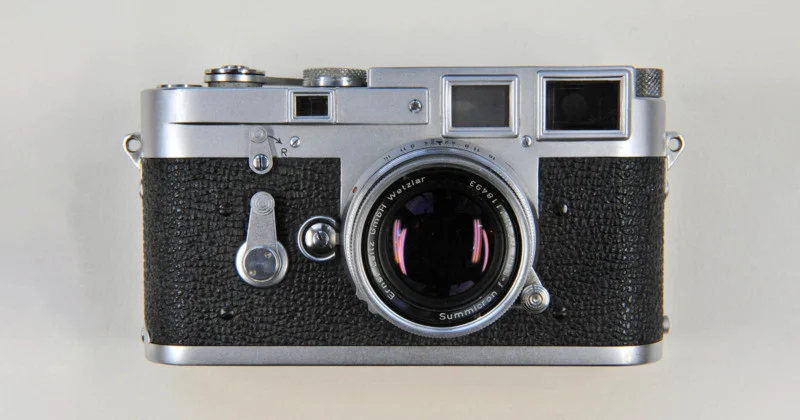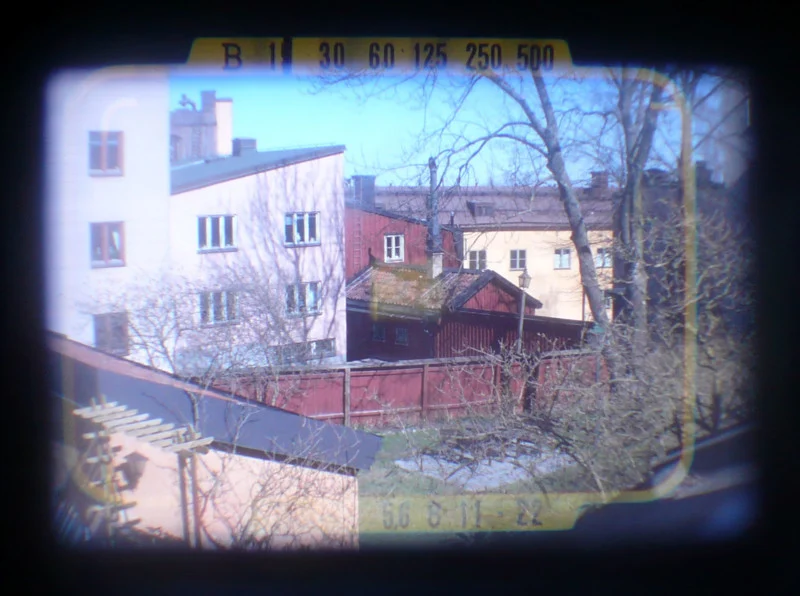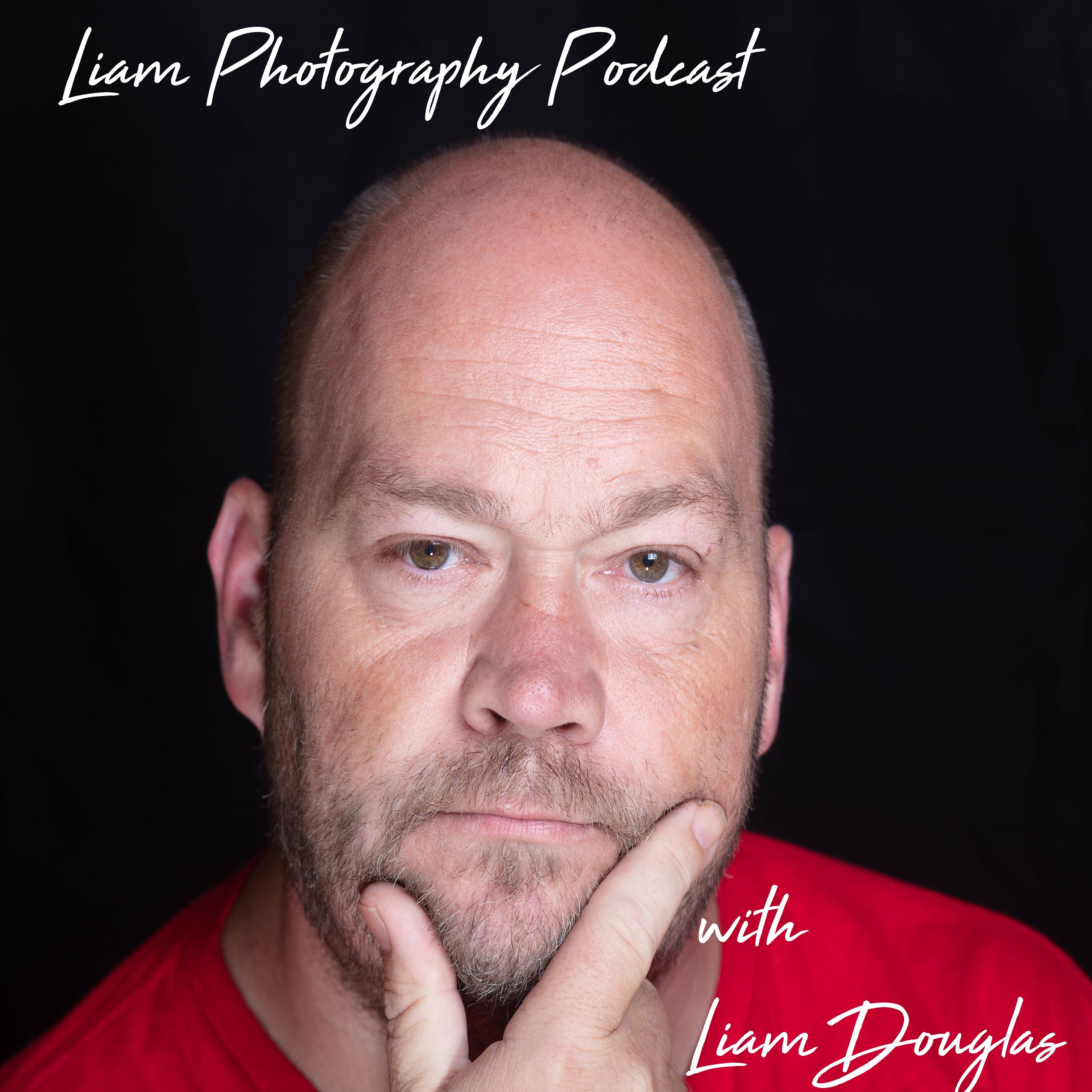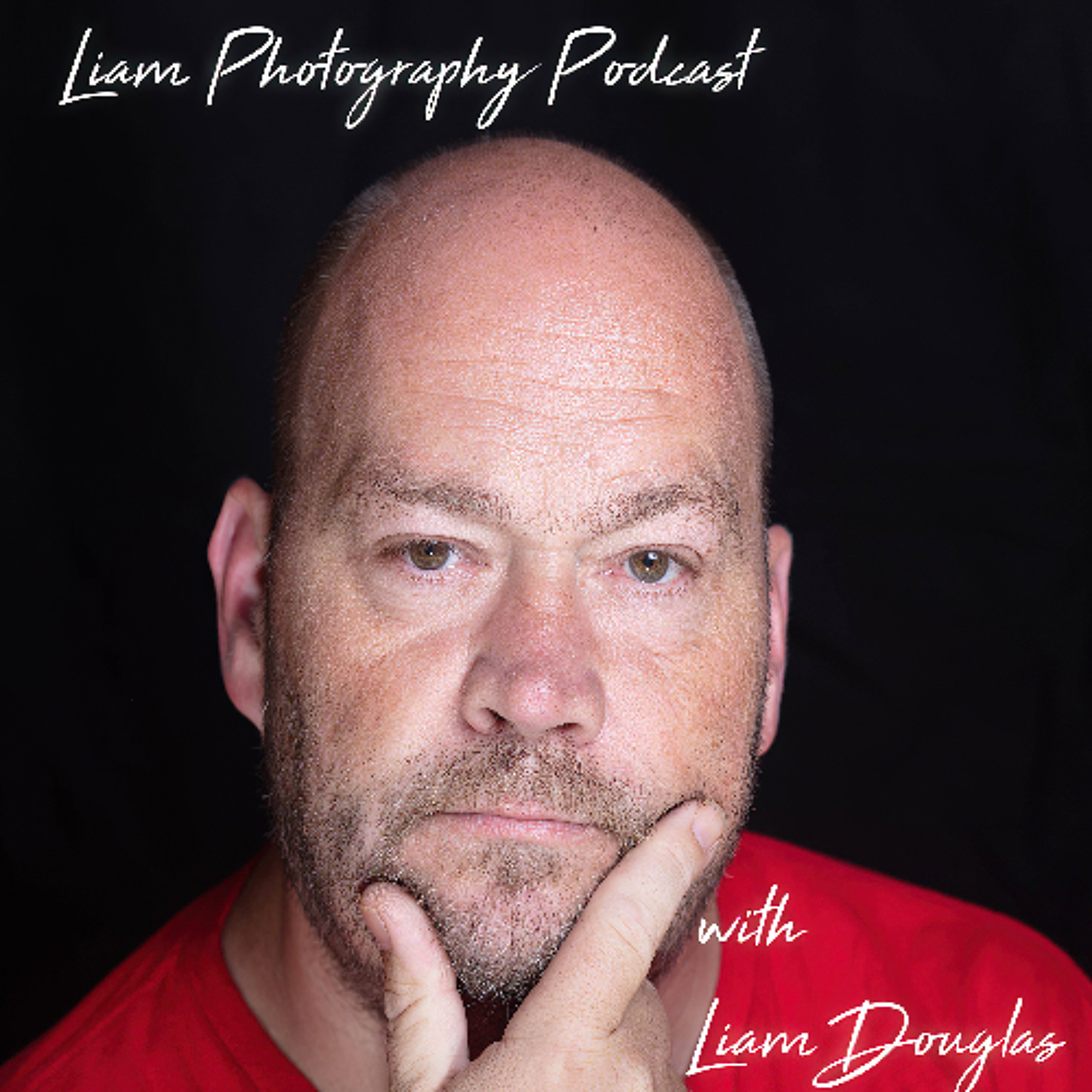You can find the show notes here.
Remember I now have my own discount code for all Platypod branded products at http://www.platypod.com using my code LD20 you can save 20% off on ALL individual Platypod branded products EXCLUDING Bundles, which are already discounted and Square Jellyfish or Lume Cube branded items.
Also be sure to join the Liam Photography Podcast Facebook Group https://www.facebook.com/groups/liamphotographypodcast/ You can reach the show by call or text @ 470-294-8191 to leave a comment or request a topic or guest for the show. Additionally you can email the show @ liam@liamphotographypodcast.com and find the show notes at http://www.liamphotographypodcast.com.
You can find my work @ https://www.liamphotography.net and follow me on Instagram, Facebook and Twitter @liamphotoatl. If you like abandoned buildings and history, you can find my project @ http://www.forgottenpiecesofgeorgia.com. and http://www.forgottenpiecesofpennsylvania.com.
Please also stop by my Youtube channels Liam Photography
Forgotten Pieces of Georgia Project
Forgotten Pieces of Pennsylvania Project
Show Transcript
Latest contest here.
Greetings, you’re listening to the Liam Photography Podcast, I’m your host Liam Douglas and this is Episode 322. In today’s episode I wanted to cover a topic I get questions about from photography students and that is what is a rangefinder camera?
In the world of photography mirrorless cameras are on the rise and they have pushed DSLRs aside in the history of camera technology. But as you know film is not dead thanks to a renewal in interest from many new photographers, but films cameras are not the only tech still not dead, there are also still rangefinder cameras. A rangefinder which seems to be a dinosaur in photography is still not dead with their designs being sharp, fast and a challenge to even the most skilled photographers.
Not everyone in photography needs a rangefinder camera but those that are curious should at some point experiment with the cameras that started modern photography. There are digital versions of rangefinders out there but even more models exist from the film era. Rangefinders have no AF, no zoom lenses and no bells, whistles or frills, they are just a simplified camera that has become a real pleasure to shoot. They are just a simplified camera that are an intuitive tool to work with and they continue to produce some of the most amazing images even today.
What is a Rangefinder?

A true rangefinder camera uses a double window system that provides a very accurate way to manual focus and although many people think a rangefinder doesn’t have a viewfinder, they do and one that has bright lines that show the frame of the film or sensor and help the photographer use it to compost the shot. They also have a rangefinder window near the viewfinder and this window projects a separate image onto the viewfinder image and when the two views line up the lens is in perfect focus on the subject. To focus with a rangefinder camera the photographer simply lines up the lens’s focus until the focusing patch is aligned with the main viewfinder’s scene.
Besides allowing super tack sharp focus without any electronics at all to function, and there are no electronics that try to decide who is the subject of the scene and a rangefinder also helps the photographer with their depth of field. Originally used primarily by cartographers and sailors, the rangefinder employs triangulation to gauge
a subject’s distance or range, hence the name rangefinder. Once you have properly focused on your subject you can look at your lens’ distance scale to see the absolute focusing distance. With knowing exactly how far away your subject is, you can then use the depth of field scale to achieve a nice, shallow depth of field for your shot. A rangefinder camera will make you work a bit and think a bit, but with time and practice like anything else in life it gets easier and easier to use.
Although a novice can pick up a rangefinder camera and shoot with it, it is an especially great tool for those that are seasoned shooters. The overall quality of a rangefinder remains high and there are several factors to explain this. Besides the super accurate focus, rangefinders also get excellent results as they employ a really high quality prime lens. They do not use zoom lenses as with their constantly changing focal length a zoom would be impossible to use with the rangefinder window. It’s also beneficial that rangefinders only use primes as prime lenses are known for producing much higher quality images than any zoom. And because a rangefinder doesn’t use a mirror to project the image from the lens to the viewfinder the lens sits much closer to the film plane or sensor which helps to create a very sharp, well defined image.
History of the Rangefinder

Early non-coupled rangefinder cameras used a separate rangefinder system that allow the photographer to determine the distance to the subject and then transfer this calculation directly to the lens’ focus ring. Rangefinder cameras usually refers to a camera body with coupled rangefinders such as the original Kodak 3A Autographic Special made in 1916. Rangefinders took their greatest leap forward in technology with the introduction of the Leica 35mm film cameras and the early Leica cameras popularized the use of rangefinder add-ons, but the legendary M3 first combined the viewfinder and rangefinder in 1954. The “M” designation in this model stands for messsucher, which is the German word for viewfinder-rangefinder. The Leica M3 was such a huge commercial success with over 220,000 units sold during it’s production run through it’s 12-year production cycle which ended in 1966.
Other companies that found success with the film rangefinder models of cameras were Nikon, Canon, Kodak, Zeiss, Contax and Argus. With the rise of SLR or single lens reflex cameras such as the iconic Nikon F in 1959 with autofocus lenses
ended the dominance of the rangefinder, but even these new technologies could not totally kill off the rangefinder. More amateur models of rangefinders were still successful in the 1960s and Japanese brands such as Canon, Fuji, Olympus, Yashica, Ricoh, Minolta and Mamiya still produced popular fixed lens 35mm rangefinder cameras that survived for a time before autofocusing compact 35mm cameras stole their thunder.
With the ubiquity of the electronic viewfinder, some now consider today’s rangefinders an obsolete system, but newcomer camera companies like Pixii are developing new, state-of-the-art rangefinder cameras and Leica’s new M11 sells for more money than any other prosumer full-frame camera on the market today. Even today the rangefinder’s benefits still outweigh its disadvantages and that has been keeping the system still relevant a century after it was first introduced.
In 2010, Fujifilm unveiled the Fujifilm X100, an influential camera that started the company’s X100 series of cameras and led to a new wave of digital cameras inspired by the vintage camera designs. Although the X100 line is designed to look and work like a rangefinder camera, it is not technically an actual rangefinder body. The X100 line does feature a direct optical viewfinder just like an actual rangefinder, but it does not have the focusing system of a true rangefinder so it is considered a “rangefinder style” camera and not a true rangefinder.
Starting with the X100T and current models, Fujifilm did introduce an “electronic rangefinder” feature, but this is simply a small EVF display in the corner of the optical viewfinder that provides an enlarged view of the patch the photographer is focusing on and the focusing still does not rely on lining up the two patches to achieve focus like a true rangefinder would. The faux rangefinder systems “makes manual focusing while using the optical viewfinder much easier, and more like a mechanical rangefinder,” Fujifilm states.

Benefits of Rangefinder Cameras
There are many things to like in a rangefinder camera, such as the focus, the feel and simplicity, the overall experience, the list goes on and on, but this isn’t to say that a DSLR or mirrorless digital camera is garbage in comparison to a rangefinder, only that each camera type offers it’s advantages and for a classic or mechanical photographer, the rangefinder hits a lot of high notes.
Super Accurate Focus
The rangefinder’s single greatest attribute is that it has extremely precise focus to make certain you get a great image capture. But it must be mentioned in the early days of SLRs, before the event of autofocus lenses, the viewfinder screen showed a fuzzy overall scene until the lens focused on the actual subject. Comparing this to the rangefinder’s small rectangle in the middle of the viewfinder. Here in this rectangle is where the focus becomes clear.
Our human eyes are better at detecting double and split images than they are at discerning between a totally sharp and a nearly sharp image. Rangefinders make focusing super easy and if you’re focusing on a telephone pole, it will be in focus when the pole makes a continuous straight line from the outer area of the viewfinder, down through the central focusing rectangle, and again into the viewfinder’s outer area. This is called split-image focusing.
For a subject like a person’s head, the viewfinder will show a fuzzy, low-contrast duplicate head when out of focus. When the focusing rectangle shows one fused, brilliant image, the head is in focus. This is double-image focusing.
Photographers can check split- and double-image focusing for a subject in order to be extra sure of correct focus. One trick for focusing on a subject with horizontal lines is to turn the camera vertically for focusing, then return it to a horizontal position for taking the photo (assuming a landscape orientation is desired). With no autofocus, the lens will naturally hold focus unless you move it.

Rapid Focus
By using these focusing techniques, rangefinders work well in poor light, and they accommodate bad eyesight. Detecting poor focus is relatively easy when something like a telephone pole doesn’t line up through the entire viewfinder, or when a person seems to have a faint double image lingering next to it, one that moves around when you move the lens focus ring.
For this reason, rangefinders also allow for relatively fast focusing. With a short amount of practice, it’s easy to tell if the lens focus ring must move right or left to move the
telephone pole or figure into alignment. Many aspects of photography become faster once the computer or machine gets out of the way.
Rangefinders are popular for street and feature photography, but they’re also useful for photographing children, animals, and sports. One reason is the stable focus. Rangefinders allow you to easily focus on a spot, wait for the subject to pass by that predetermined place, and then quickly snap a frame.
Seeing Beyond the Frame
A rangefinder’s viewfinder shows more than just the frame it puts on film or sensor. Framelines within the viewfinder show what will actually be captured in the resulting photo, but there is also additional space that provides a wider view of the scene for context.
This feature of rangefinders lets the photographer watch for action that is about to enter the frame and release the shutter when the moment is right. With an SLR camera, on the other hand, what you see through the viewfinder is roughly what you will get in your resulting photo, so a photographer will need to take their eye off the viewfinder or open their non-viewfinder eye in order to see the wider scene being photographed.
No Mirror
Granted, the absence of a mirror made more impact before mirrorless cameras, especially now that the DSLR is in a tailspin. Compared to a single-lens reflex camera, a rangefinder feels calm when clicked and it makes little noise. This allows for shooting at slower shutter speeds because no mirror means less camera shake.
Quiet shutters keep you discreet on the street, in the subway, or wherever else you’re inconspicuously snapping photos of unsuspecting subjects. No mirror also lets the lens sink into the camera body more, putting its rear element closer to the sensor or film plane. This makes for an overall sharper image.
Prime Lenses
The rangefinder’s reliance on prime lenses also helps deliver superior image quality, due to the prime lens’s simpler design and concentrated precision. Also, prime lenses are small because they lack autofocus motors and components. This makes the rangefinder set-up especially good for travel and keeps a photographer discreet when doing street or even portrait work.
Compact and Very Reliable
Comparing a rangefinder to a single-lens reflex becomes harder as the DSLRs disappear from the market, but back in the day a rangefinder was noticeably smaller and lighter than a camera with a moving mirror inside of it. Today, rangefinders continue to weigh less than many mirrorless cameras, and they fit better in your pocket. The latest mirrorless cameras rely on technology and autofocus to please users, which means they need room to fit more electronics.
Digital rangefinders don’t need to be bulky. In fact, that contradicts their purpose. Rangefinders inspire simplicity in photography. Less computational technology is more, for rangefinders. Simple usually translates to reliable, and in film rangefinders, this can extend as far as a purely mechanical camera that doesn’t even need a battery. The re-released Leica M6 film camera, for example, only needs a battery for the light meter but can operate fine without it. This can be great in extremely cold conditions and on long, remote travels.
A Different Shooting Experience
Accurate focusing is one thing. The feeling you get while photographing is another — is this not the most important aspect of photography? Thanks to their inherent simplicity, rangefinders reduce photography to its essence.
Rangefinders take you back to the basics of photography. They let you concentrate on making photos without having to overthink. Forget excess buttons and beeps. Henri Cartier-Bresson made photos better than we will ever achieve, and he used a rangefinder, no autofocus.
The Drawbacks of a Rangefinder Camera
Alas, no camera type is perfect (which is why it’s fun and wise to own or practice with many). Rangefinders are certainly not for everyone. They can be a pain. Like any tool, they come with limitations. Rangefinders can definitely restrict your photography. How?
Parallax Error
The viewfinder window on a rangefinder sits above and beside the lens. What you see is not what you get. This means you can inadvertently cut off parts of your subject.
Parallax is worse at close range. Some rangefinders, like the Leica models, compensate for this by shifting the viewfinder’s bright lines — the markers that determine the actual area of the film or sensor’s frame — as focus changes from near to far, but not all cameras offer this assistance.
At large distances parallax is insignificant. But close-in it becomes important and must be accounted for. In the digital world, parallax can be remedied with live view or with instant review, but with film, the photographer had better get to know his or her camera well and make necessary adjustments to composition.
Difficult and Challenging
Rangefinders make you do a lot of the photographic work. Beginner photographers can learn much from a rangefinder, but the learning curve is steep. Rangefinders will improve any photographer’s technical chops, but they require an investment of time. Manual focus, no zoom, film, a basic light meter, parallax: rangefinders present myriad obstacles.
Apart from these challenges, rangefinders, especially the film versions, offer shutter speeds that aren’t quite as fast as a single-lens reflex camera: some rangefinders top out at 1/1000 or even 1/500. With film and its fixed ISO, this can lead to serious sacrifices of aperture and thus depth of field.
Rangefinders focus easiest with shorter focal length lenses. However, macro lenses do not work well with a rangefinder, and neither does anything over 135mm, when focusing becomes a nightmare. Even a 90mm lens can be hard to focus when your subject is close or moving. The lack of zoom options is limiting, especially when you budget for a quiver of focal lengths to replace a standard zoom.
Few digital rangefinders exist, and compared to entry-level (or even top-of-the-line) DSLRs and mirrorless, they are spendy. Plenty of affordable, even outright cheap, rangefinders do exist in film, as mentioned below. But rangefinders require precision alignment to work properly, and cheaper options might not focus so sharply, or they might easily fall out of alignment.
The above reasons suggest why most professional photographers today work with advanced camera systems — mirrorless bodies that accept autofocus zoom lenses and come complete with onboard mini-computers. But photography is also art, and what fun is a camera that tries to out-smart and out-maneuver you, that thinks it knows what you’re trying to do? This is one reason why rangefinders have survived the last century of photography.
Some Rangefinders to Consider Trying - Film
Olympus RC. This extremely compact camera makes no fuss. It has auto and
manual exposure settings but remains completely manual. A battery is used for the light meter, and it has a reputation for durability. The Olympus RC features a 42mm f/ 2.8 lens.
Hasselblad XPan. The Hasselblad uses regular 35mm film to make 35mm photos, but it also features a panoramic mode to capture images in 24 x 65mm: two 35mm frames together make this cool panoramic frame. The XPan is ruggedly made of titanium and aluminum, and it works with interchangeable lenses.
Fuji GW690iii. Also known as the Texas Leica, due to its size and weight, this medium format rangefinder
nonetheless takes fine 6 x 9cm (medium format) photos. It features an EBC Fujinon 90mm, f/3.5 lens. No light meter and no battery mean no nonsense and a long life for this classic film camera.
Canonet. Quiet, small, and unobtrusive, the Canonet is also a bargain. But its 40mm F1.7 lens is perfectly
capable of taking sharp, contrast-rich photos. The viewfinder offers parallax compensation, but the light meter’s mercury batteries are no longer available. Still, a favorite of many film shooters.
Digital Rangefinders
Pixii. This little-known brand comes from France. It has a 26-megapixel APS-C
BSI CMOS sensor, uses the Leica M-mount lens system, and offers a distinct monochrome shooting mode. The Pixii has an interactive optical viewfinder which includes a rangefinder focusing rectangle but also shows key information like exposure speed or exposure compensation.
Leica M11. The king of rangefinders continues to bear the Leica name. Evolved directly from the M3, the new M11 includes an array of high-tech features including a pixel-shifting, full-frame 60-megapixel BSI CMOS sensor. Its viewfinder has a focusing rectangle and arrows to tell you if your shot is over-, under-, or “correctly” exposed. This is pure rangefinder technology, at a luxury mirrorless price.
Conclusion
Using a rangefinder camera provides a photographer with simplicity, pleasure, limitations, and challenge. They might just be the love-hate camera. Naysayers aside, the rangefinder is beloved for its classic approach to photography and its brilliant focusing system, among other attributes.
Good photography should not be as easy as point and shoot, rangefinder aficionados will argue. While the entry cost for a digital rangefinder may exceed most budgets, a quality film rangefinder can set you back a few hundred dollars. The only way to know if rangefinder photography is your thing is to try one, which also provides a good excuse to shoot film. Just as with film, practicing with a rangefinder will make you a stronger photographer. That’s reason enough to pick one up.
Taken from the article What is a Rangefinder Camera by Daniel O’Neil on PetaPixel
Remember I now have my own discount code for all Platypod branded products at http://www.platypod.com using my code LD20 you can save 20% off on ALL individual Platypod branded products EXCLUDING Bundles, which are already discounted and Square Jellyfish or Lume Cube branded items.
Also be sure to join the Liam Photography Podcast Facebook Group https://www.facebook.com/groups/liamphotographypodcast/ You can reach the show by call or text @ 470-294-8191 to leave a comment or request a topic or guest for the show. Additionally you can email the show @ liam@liamphotographypodcast.com and find the show notes at http://www.liamphotographypodcast.com.
You can find my work @ https://www.liamphotography.net and follow me on Instagram, Facebook and Twitter @liamphotoatl. If you like abandoned buildings and history, you can find my project @ http://www.forgottenpiecesofgeorgia.com. and http://www.forgottenpiecesofpennsylvania.com.
Please also stop by my Youtube channels Liam Photography



Comments & Upvotes